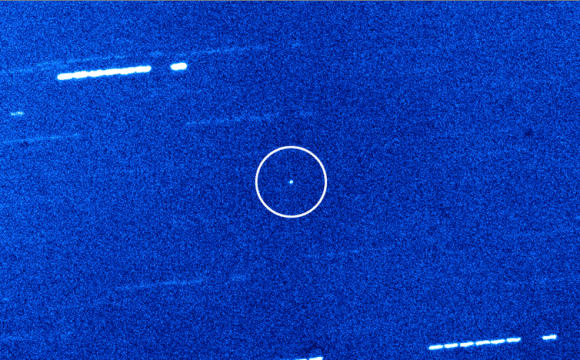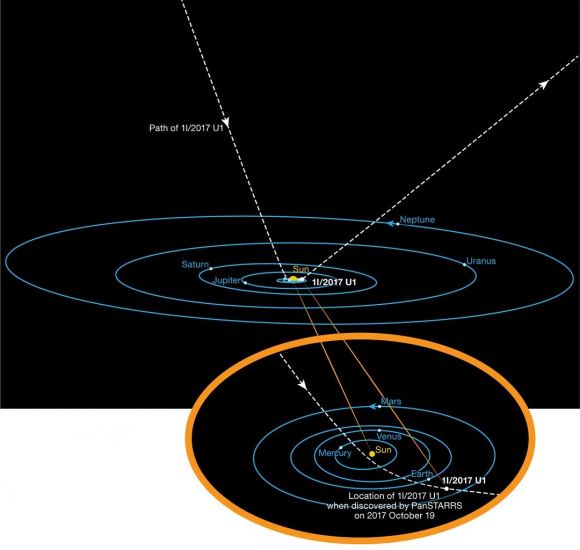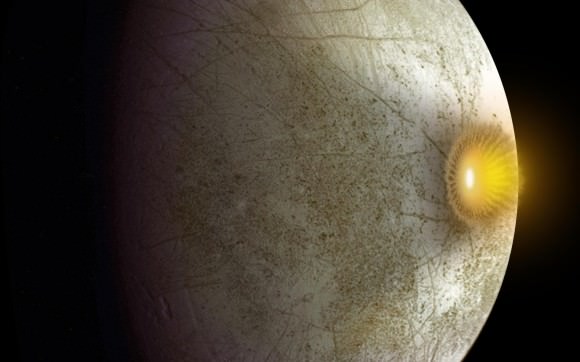On October 19th, 2017, the Panoramic Survey Telescope and Rapid Response System-1 (Pan-STARRS-1) telescope in Hawaii announced the first-ever detection of an interstellar asteroid – I/2017 U1 (aka. ‘Oumuamua). Since that time, no effort has been spared to study this object before it leaves our Solar System. These include listening to it for signs of communications, determining its true nature and shape, and determining where it came from.
In fact, the question of this interstellar object’s origins has been mystery since it was first discovered. While astronomers are sure that it came from the direction of Vega and some details have been learned about its past, where it originated from remains unknown. But according to a new study by a team of astronomers from the University of Toronto, Scarborough, ‘Oumuamua may have originally come from a binary star system.
The study, titled “Ejection of rocky and icy material from binary star systems: Implications for the origin and composition of 1I/‘Oumuamua “, recently appeared in the Monthly Notices of the Royal Astronomical Society. The study was led by Alan P. Jackson, a research fellow at the Center for Planetary Sciences (CPS) at the University of Scarborough, and included members from both the CPS and the Canadian Institute for Theoretical Astrophysics (CITA).

For the sake of their study, Jackson and his co-authors considered how in single star systems (like our own), asteroids do not get ejected very often. For the most part, it is comets that become interstellar objects, mainly because they orbit the Sun at a greater distance and are less tightly bound by its gravity. And while ‘Oumuamua was initially mistaken for a comet, follow-up observations by the European Southern Observatory (ESO) indicated that it is likely an asteroid.
With the help of other astronomers, it soon became apparent that ‘Oumuamua was likely an oddly-shaped rocky object that measured about 400 meters (1312 ft) long and was tube-shaped. These findings were rather surprising to astronomers. As Jackson explained in a recent Royal Astronomical Society press release:
“It’s really odd that the first object we would see from outside our system would be an asteroid, because a comet would be a lot easier to spot and the Solar System ejects many more comets than asteroids.”
As such, Jackson and his team hypothesized that interstellar objects like ‘Oumuamau are more likely to be ejected from a binary system. To test this theory, they constructed a population synthesis model that considered just how common binary star systems are in the Galaxy. They also conducted 2000 N-body simulations to see just how efficient such systems would be at ejecting objects like ‘Oumuamua.

What they found was that binary stars are produced at a rate of about 30% by number and 41% by mass, and that rocky objects like ‘Oumuamua are far more likely to be ejected from binary than single star systems. Based on ‘Oumuamua’s rocky composition, they also determined that the asteroid was likely ejected from the inner part of its solar system (i.e. inside the “Ice Line”) while the system was still in the process of formation.
Lastly, they determined that rocky objects are ejected from binary systems in comparable numbers to icy objects. This is based on the fact that the presence of a companion star would mean that more material would become unstable due to stellar encounters. In the end, this material would be more likely to be ejected rather than accreted to form planets, or take up residence in the outer reaches of the star system.
While there are still many unanswered questions about ‘Oumuamua, it remains the first interstellar asteroid that scientists have ever known. As such, its continued study can tell us a great deal about what lies beyond our Solar System. As Jackson put it:
“The same way we use comets to better understand planet formation in our own Solar System, maybe this curious object can tell us more about how planets form in other systems.”
The team’s findings were also the subject of a presentation that took place at the 49th Lunar and Planetary Science Conference, which took place this week at The Woodlands, Texas.
Further Reading: Royal Astronomical Society, MNRAS



